News
Are You Attracting Thieves To Your Valuables? Tips To Protect Yourself
By Sheldon Spackman
(originally published August 9, 2017)
Here are some interesting… well maybe some disturbing facts RCMP and Citizens On Patrol discovered in Red Deer this summer.
During Westerner Days last month, over the period of two days, Mounties and volunteers with Citizens on Patrol checked vehicles in the Westerner Park parking lot to see which vehicle owners were leaving themselves vulnerable to smash and grab crimes.
Although members and volunteers did not try to open any doors or touch the vehicles other than leaving a flyer under the wiper blade, a significant portion were found to be attractive targets for criminals.
Two hundred vehicles were checked on July 22nd and 81 more on July 23rd.
More thank half passed! 56 percent were found to be free of any visible temptations for criminals such as cash, electronics or other valuables in plain site.
But that means nearly half did not pass! 44 percent were found to be vulnerable to a smash and grab crime.
36 vehicles had possessions or cash in plain view
19 had visible electronics
55 had garage door openers in plain site
9 had the keys left inside!
Constable Sean Morris with the Red Deer RCMP says “Citizens continue to express their concern about property crimes, but many also continue to make choices that create attractive targets for smash and grab thefts. Criminals prowl parking lots looking for easy targets – why would you tempt them to smash your windows or steal your vehicle?”
We found some tips to consider every time you leave your vehicle. Here are the top ten tips to protect your vehicle and its contents while unattended from the Insurance Bureau of Canada…
- Ensure your doors are always locked and the key is in your pocket
- Always park in well-lit areas
- Always roll up your car windows
- Never leave money in plain sight
- Put shopping bags and other parcels in the trunk
- Ensure your GPS and other electronic devices are out of sight
- Keep your vehicle registration certificate and proof of insurance on you
- Take your cellphone with you
- Never leave your vehicle running when unattended
- If you frequently park in the same parking lot, park in a different spot each day.
For more info, tips and to rate your vehicle, go to the Insurance Bureau of Canada web site.
And here’s some explanation from the Calgary Police Service.
- Lock it up. Close the windows, lock the doors and the trunk, and take your keys with you – never leave your vehicle unlocked, even for the few minutes it takes to duck into a store or run back into the house. And don’t hide a key on the vehicle – criminals know ALL the hiding spots.
- Turn it off. Never leave your vehicle idling alone, even if you lock the doors. It costs the environment in emissions, and it could cost you when a criminal bypasses the door lock in seconds.
- Hide your valuables. Wherever and whenever you park, remove your valuables – including any removable stereos. If that’s not practical (you’re in the middle of a shopping day, for example), hide the valuables in the trunk, out of sight, and then move the vehicle to a different place in the parking lot. Thieves watch parking lots to see who’s stashing shopping bags and then heading back into the mall.
- Stow it right. If you have a garage, use it and lock it. If you don’t, choose a parking spot that’s as well lit and well travelled as possible, within sight of your windows.
- Think security. If your vehicle has an alarm, use it. If it doesn’t, consider installing one, or at least using an anti-theft device such as a steering-wheel locking bar. These items can deter some criminals, and can delay others. If your vehicle is especially attractive to criminals, consider installing a security system such as an electronic vehicle disabling device, a hood-locking device or a location tracking system.
- Protect yourself. Never leave any identifying information, such as your name, address, phone number or vehicle registration/insurance in the vehicle. Carry it in your wallet or purse instead, and never leave these items in the vehicle. You’ll also need the registration and insurance details in case the vehicle is stolen, so it’s a great idea to make an extra copy of these documents, to keep at home.
- Report it! If you see suspicious people in or around vehicles, call the Police Service at 403-343-5575. And if your vehicle is broken into or stolen, report it to police right away, regardless of loss or insurance coverage. Break-ins are rarely isolated – reporting them immediately with as much detail as possible can help police in their investigation.
International
CBS settles with Trump over doctored 60 Minutes Harris interview
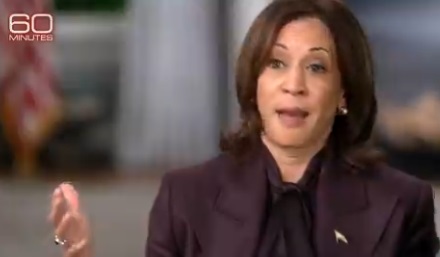
CBS will pay Donald Trump more than $30 million to settle a lawsuit over a 2024 60 Minutes interview with Kamala Harris. The deal also includes a new rule requiring unedited transcripts of future candidate interviews.
Key Details:
- Trump will receive $16 million immediately to cover legal costs, with remaining funds earmarked for pro-conservative messaging and future causes, including his presidential library.
- CBS agreed to release full, unedited transcripts of all future presidential candidate interviews—a policy insiders are calling the “Trump Rule.”
- Trump’s lawsuit accused CBS of deceptively editing a 60 Minutes interview with Harris in 2024 to protect her ahead of the election; the FCC later obtained the full transcript after a complaint was filed.
Tonight, on a 60 Minutes election special, Vice President Kamala Harris shares her plan to strengthen the economy by investing in small businesses and the middle class. Bill Whitaker asks how she’ll fund it and get it through Congress. https://t.co/3Kyw3hgBzr pic.twitter.com/HdAmz0Zpxa
— 60 Minutes (@60Minutes) October 7, 2024
Diving Deeper:
CBS and Paramount Global have agreed to pay President Donald Trump more than $30 million to settle a lawsuit over a 2024 60 Minutes interview with then–Vice President Kamala Harris, Fox News Digital reported Tuesday. Trump accused the network of election interference, saying CBS selectively edited Harris to shield her from backlash in the final stretch of the campaign.
The settlement includes a $16 million upfront payment to cover legal expenses and other discretionary uses, including funding for Trump’s future presidential library. Additional funds—expected to push the total package well above $30 million—will support conservative-aligned messaging such as advertisements and public service announcements.
As part of the deal, CBS also agreed to a new editorial policy mandating the public release of full, unedited transcripts of any future interviews with presidential candidates. The internal nickname for the new rule is reportedly the “Trump Rule.”
Trump initially sought $20 billion in damages, citing a Face the Nation preview that aired Harris’s rambling response to a question about Israeli Prime Minister Benjamin Netanyahu. That portion of the interview was widely mocked. A more polished answer was aired separately during a primetime 60 Minutes special, prompting allegations that CBS intentionally split Harris’s answer to minimize political fallout.
The FCC later ordered CBS to release the full transcript and raw footage after a complaint was filed. The materials confirmed that both versions came from the same response—cut in half across different broadcasts.
CBS denied wrongdoing but the fallout rocked the network. 60 Minutes executive producer Bill Owens resigned in April after losing control over editorial decisions. CBS News President Wendy McMahon also stepped down in May, saying the company’s direction no longer aligned with her own.
Several CBS veterans strongly opposed any settlement. “The unanimous view at 60 Minutes is that there should be no settlement, and no money paid, because the lawsuit is complete bulls***,” one producer told Fox News Digital. Correspondent Scott Pelley had warned that settling would be “very damaging” to the network’s reputation.
The final agreement includes no admission of guilt and no direct personal payment to Trump—but it locks in a substantial cash payout and forces a new standard for transparency in how networks handle presidential interviews.
Daily Caller
Watch As Tucker Carlson And Glenn Greenwald Get A Good Laugh Over CNN Pretending Biden’s Decline Is Breaking News
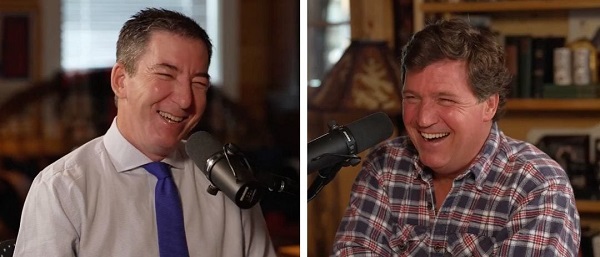

From the Daily Caller News Foundation
By Hailey Gomez
During a podcast Friday, Daily Caller News Foundation co-founder Tucker Carlson and independent journalist Glenn Greenwald couldn’t stop laughing over CNN’s sudden realization of former President Joe Biden’s mental decline.
CNN’s Jake Tapper along with Axios’ Alex Thompson released their book, “Original Sin,” on May 20, which details Biden’s cognitive slide over the last four years — a concern Republicans had raised even before the 2020 election. While appearing on “The Tucker Carlson Show,” Carlson joked that Greenwald had been “scooped” by CNN on Biden’s mental fitness.
“So you are, I think, the dean of alternative media. You’ve been doing this longer than anybody that I know personally. So it must be a little weird to get scooped by CNN on Joe Biden’s dementia, like you had no idea,” Carlson said. “None of us knew.”
“None of us knew,” Greenwald teased. ” There was that debate, and we were all shocked, but we were told he had a cold. So I was like, ‘OK, he’s on some cold medication. Who hasn’t been there before? It makes you a little dragged, a little groggy, a little just like dragged.’ But no, now Jake Tapper has uncovered the truth. It turns out Joe Biden was in cognitive decline.”
Sources told Tapper and Thompson that Biden’s mental fitness had declined rapidly during his time as president, with his mental state becoming so severe at one point that aides discussed putting him in a wheelchair.
WATCH:
Tapper has faced pushback from both Democrats and Republicans over the timing of his book and the revelations it includes. The CNN host has long defended the former president.
Carlson went on to joke with Greenwald about how he believed Tapper gathered the material for the book.
“Just a hardcore shoe leather investigative reporting,” Greenwald joked. “He’s working his sources, calling all the people in Washington, digging up FOIA documents.”
“It’s one of those things where you kind of can’t believe what you’re witnessing because Jake Tapper is pretending to have uncovered a scandal that he himself led the way in the media, or one of the leaders in the media, in covering up,” Greenwald added. “To the point where if somebody would go on his show and say ‘Joe Biden is obviously in cognitive decline.’ He would say ‘How dare you bully kids who stutter?’”
Greenwald went on to reference how Tapper had accused President Donald Trump’s daughter-in-law, Lara Trump, of “mocking” the former president over his stutter during a 2020 interview.
Despite Lara Trump pointing to what she believed were signs of Biden’s problems, Tapper dismissed her remarks at the time, saying she had “no standing to diagnose somebody’s cognitive decline.”
In addition to Lara Trump, Tapper also dismissed former Democratic presidential candidate Dean Phillips during a 2024 interview after Phillips expressed his “concerns” about Biden running for a second term.
“Obviously, he wanted Biden to win desperately and would not tolerate anyone going on the show and saying that Biden was in cognitive decline,” Greenwald said. “Now he’s making millions of dollars off a book.”
Following the media coverage of Tapper’s and Thompson’s book, Biden appeared to tell reporters on Friday he could “beat the hell out of” the two journalists.
-

 Alberta2 days ago
Alberta2 days agoAlberta Provincial Police – New chief of Independent Agency Police Service
-

 Business2 days ago
Business2 days agoWhy it’s time to repeal the oil tanker ban on B.C.’s north coast
-

 International2 days ago
International2 days agoCBS settles with Trump over doctored 60 Minutes Harris interview
-
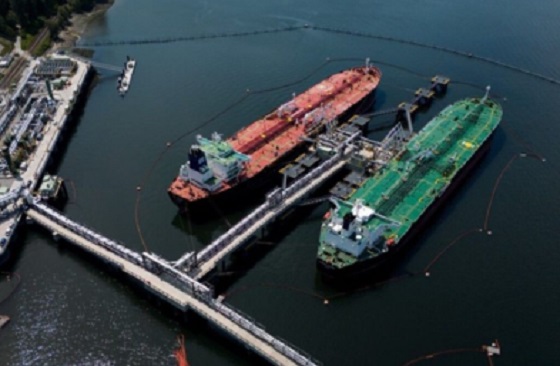
 Energy2 days ago
Energy2 days agoIf Canada Wants to be the World’s Energy Partner, We Need to Act Like It
-

 Alberta2 days ago
Alberta2 days agoPierre Poilievre – Per Capita, Hardisty, Alberta Is the Most Important Little Town In Canada
-
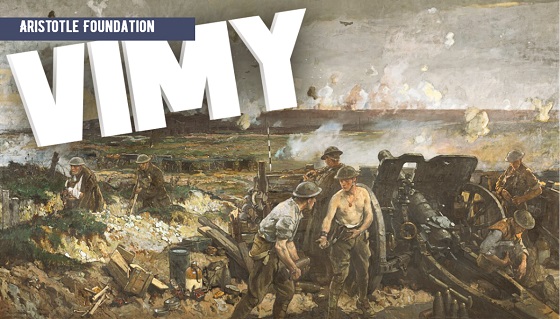
 Aristotle Foundation2 days ago
Aristotle Foundation2 days agoHow Vimy Ridge Shaped Canada
-

 Alberta1 day ago
Alberta1 day agoAlberta uncorks new rules for liquor and cannabis
-
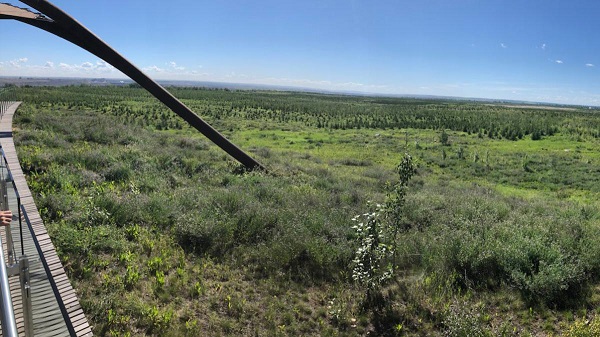
 Canadian Energy Centre1 day ago
Canadian Energy Centre1 day agoAlberta oil sands legacy tailings down 40 per cent since 2015





